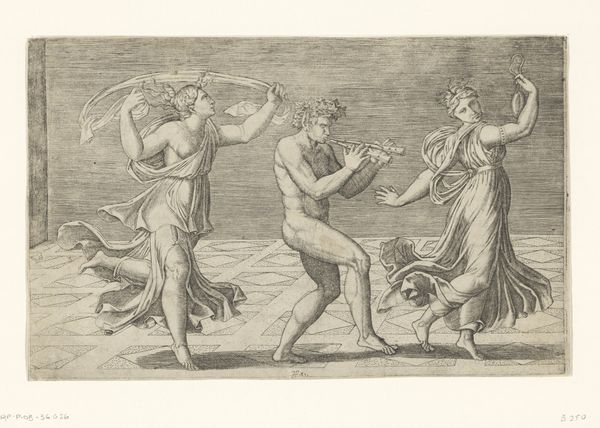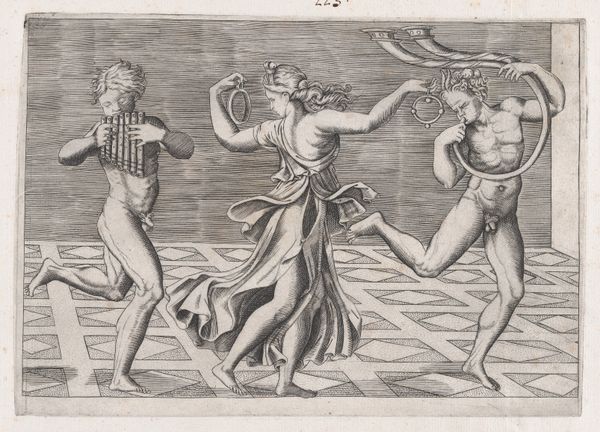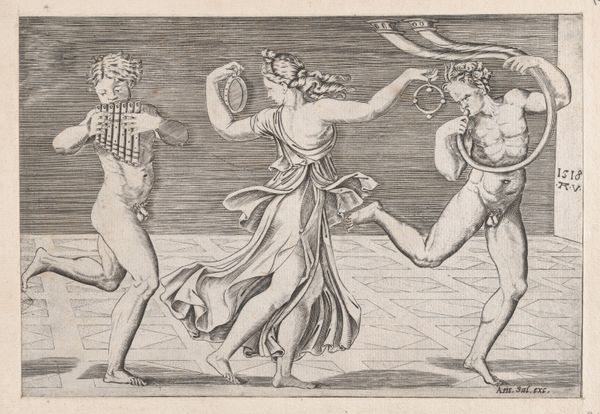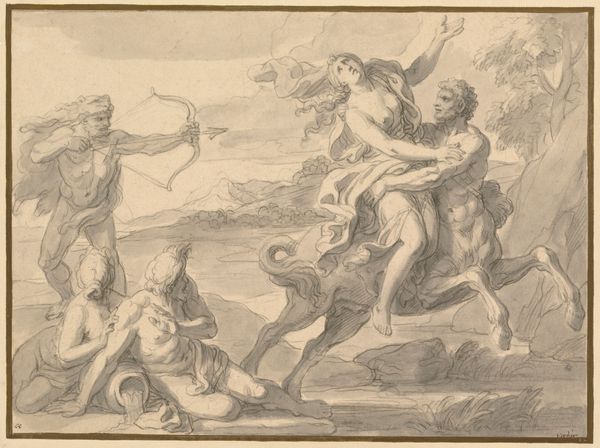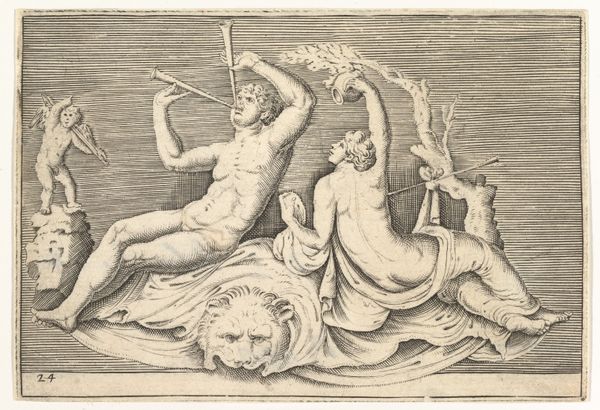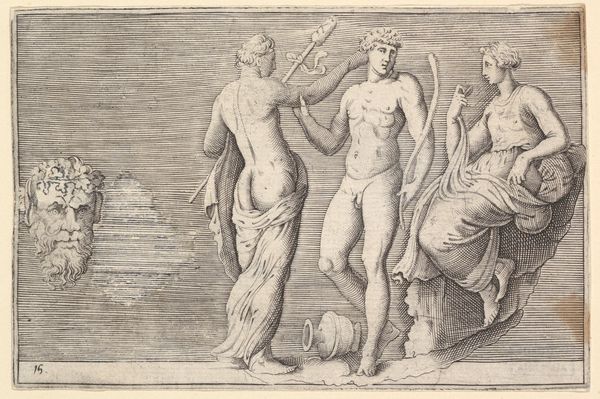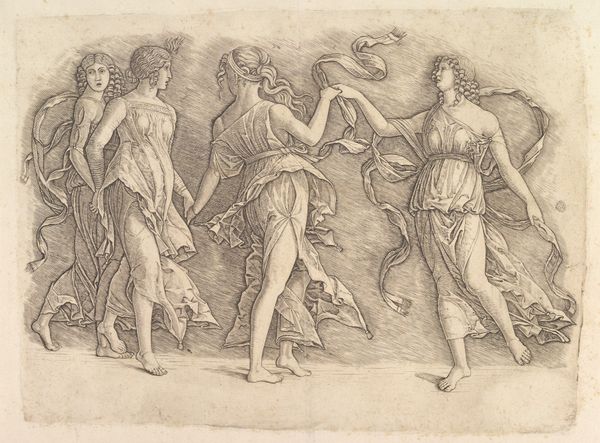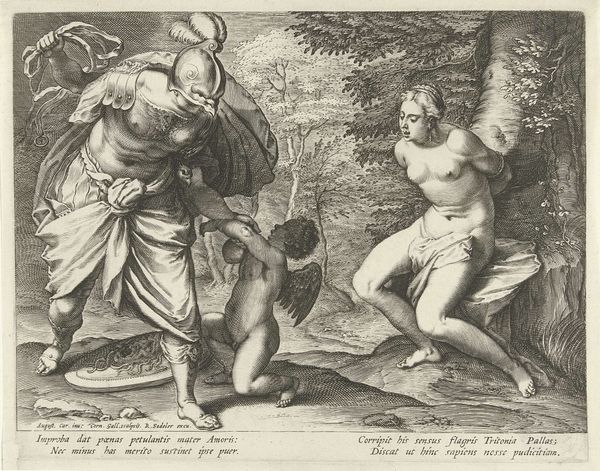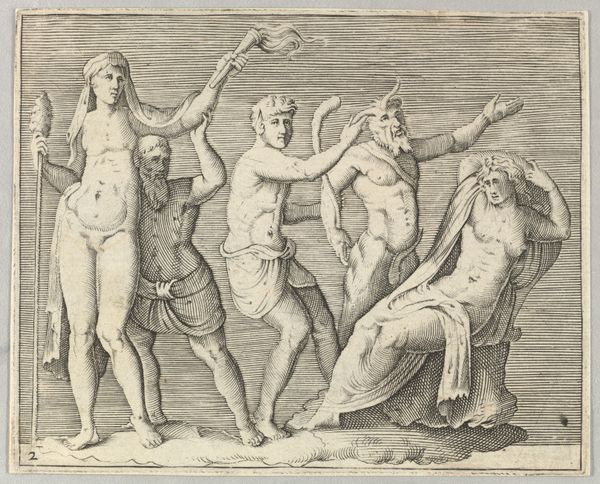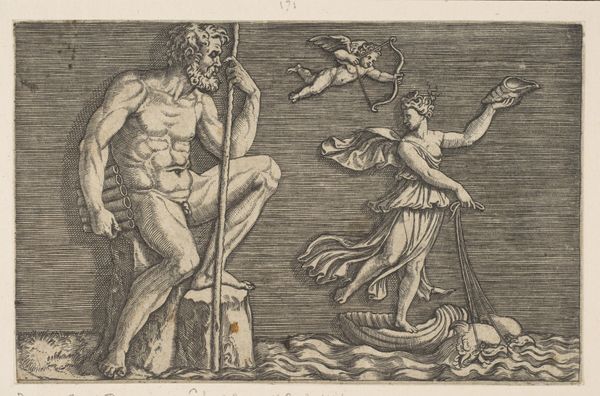
Speculum Romanae Magnificentiae: Dance of Fauns and Bacchants 1500 - 1550
0:00
0:00
drawing, print, etching
#
drawing
#
allegory
# print
#
etching
#
landscape
#
figuration
#
form
#
ancient-mediterranean
#
history-painting
#
italian-renaissance
#
nude
Dimensions: plate: 7 5/16 x 10 1/2 in. (18.5 x 26.7 cm) sheet: 9 13/16 x 13 3/16 in. (25 x 33.5 cm)
Copyright: Public Domain
This print, "Dance of Fauns and Bacchants," was made using an engraving process; an anonymous artist cut lines into a metal plate, likely copper, with a tool called a burin. The incised lines hold ink, which is then transferred to paper under great pressure. The image, made up of tiny hatched marks, shows figures in motion: a piper, dancers, and what appears to be a small goat. The quality of the print relies entirely on the engraver’s skill, and the time taken to produce a delicate image. The print would have been relatively inexpensive to produce in multiples, and easy to distribute. Prints like this circulated widely, serving as a means of communicating classical aesthetics. The “Speculum Romanae Magnificentiae” was a project to document the wonders of ancient Rome, and this print reflects a broader interest in antiquity. We can consider this artwork as an explicit example of art's intersection with the economics of its time, challenging traditional distinctions between fine art and craft.
Comments
No comments
Be the first to comment and join the conversation on the ultimate creative platform.
